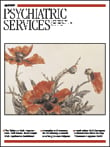In a contemporary culture that has increasingly utilized visual media products—film, television, Internet images and interactive study courses—for instruction in many fields, it is hardly surprising that films have been incorporated into medical education. This is the theme of Cinemeducation: A Comprehensive Guide to Using Film in Medical Education, a work that is full of useful, specific information to enable medical educators to obtain films and brief film clips for teaching purposes. The emphasis is on fictional feature films and for good reason. Such films in particular are rife with dramatizations of individual psychopathology, responses to adverse events, and human encounters and conflicts, including treatment relationships. At their best, movies can portray behavioral and mental health themes with both realism and emotional punch to engage viewers more effectively than so-called "educational" films, which can numb an audience with heavy didacticism. In a word, fictional movies are viewer friendly. Logistics, confidentiality, and cost may also favor use of film instead of real or standardized (actor) patients in many teaching situations.
The book's editors (two psychologists and a social worker) direct behavioral medicine training programs for family practice residents, to whom the text is specifically addressed, although much of the content in this book is equally appropriate for mental health personnel. After two introductory chapters, 400 film clips from 125 movies are listed. Times are given for locating clips using a time counter on a VCR or DVD player, and questions to trigger discussion are proposed for each. Films and clips are organized within four broad themes: the individual and family life cycle, adult diagnostic categories, the doctor-patient relationship, and specific populations. Under each theme, chapters, prepared by various authors, are devoted to more specific topics. For example, for the individual and family life cycle, seven chapters cover child and adolescent development, adult development, family dynamics, sexuality, chronic illness, geriatrics, and end-of-life issues.
The adult diagnostic categories address specific mental disorders: posttraumatic stress disorder, anxiety and depression, chemical dependency, family violence, schizophrenia and bipolar disorders, personality and dissociative disorders, and eating disorders. One can always find details of particular entries to quarrel about in a lengthy filmography like this one. For example, the alcoholic protagonist in Leaving Las Vegas was certainly aware of his suicidal bent, contrary to what is suggested here. The depiction of visual hallucinations in A Beautiful Mind bears almost no resemblance to the actual visual experiences reported by patients with schizophrenia. One problem with clips is that, when taken out of context, they may inadequately or wrongly depict clinical subtleties that are best appreciated by viewing the entire film. Obviously, teachers always need to preview films and clips for clinical and narrative authenticity.
Several recent books survey feature films of value for mental health education. Each has its strengths and weaknesses. The strength of Cinemeducation is its extensive clip listings and excellent organization of them according to a broad array of topics. Engstrom's (
1 ) book gives far more detailed lesson plans for use with film clips but covers fewer topics and films. The classic by the Gabbards (
2 ) focuses exclusively on psychotherapists, while Robinson (
3 ) lists films covering most of the disorders in
DSM-IV but doesn't address treatment. Wedding and colleagues (
4 ) also primarily emphasize film illustrations of mental disorders, and they provide the most complete discussions of topics illustrated by the films. Cinemeducation should, with these others, find a place on the shelf of any educator who wants to use feature films in teaching mental health themes.

